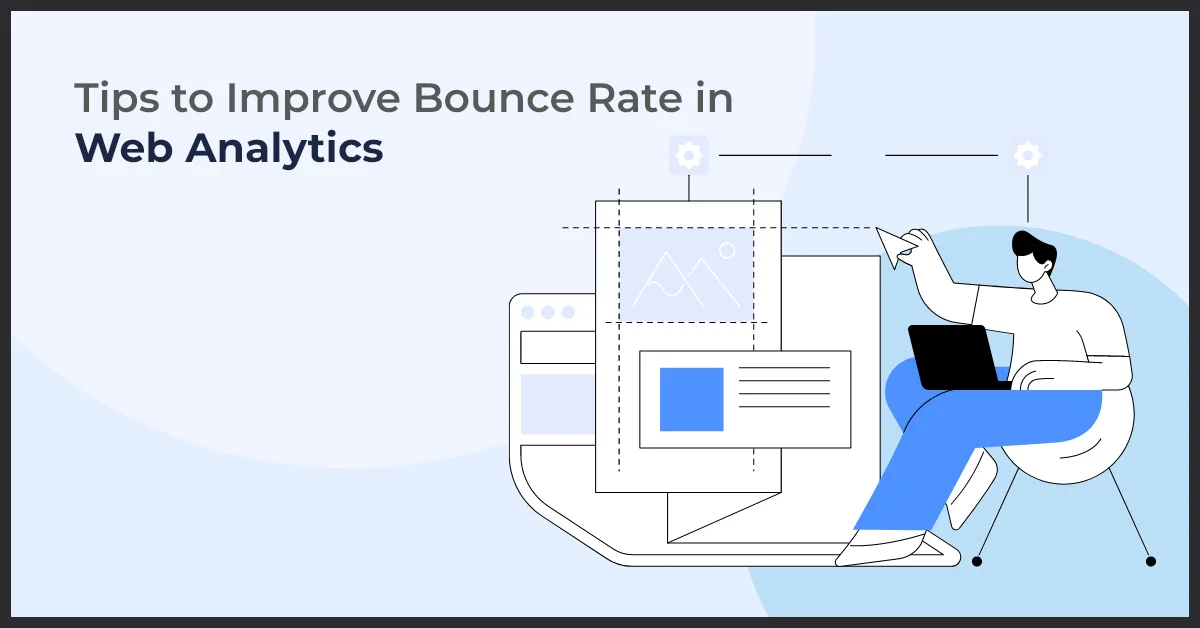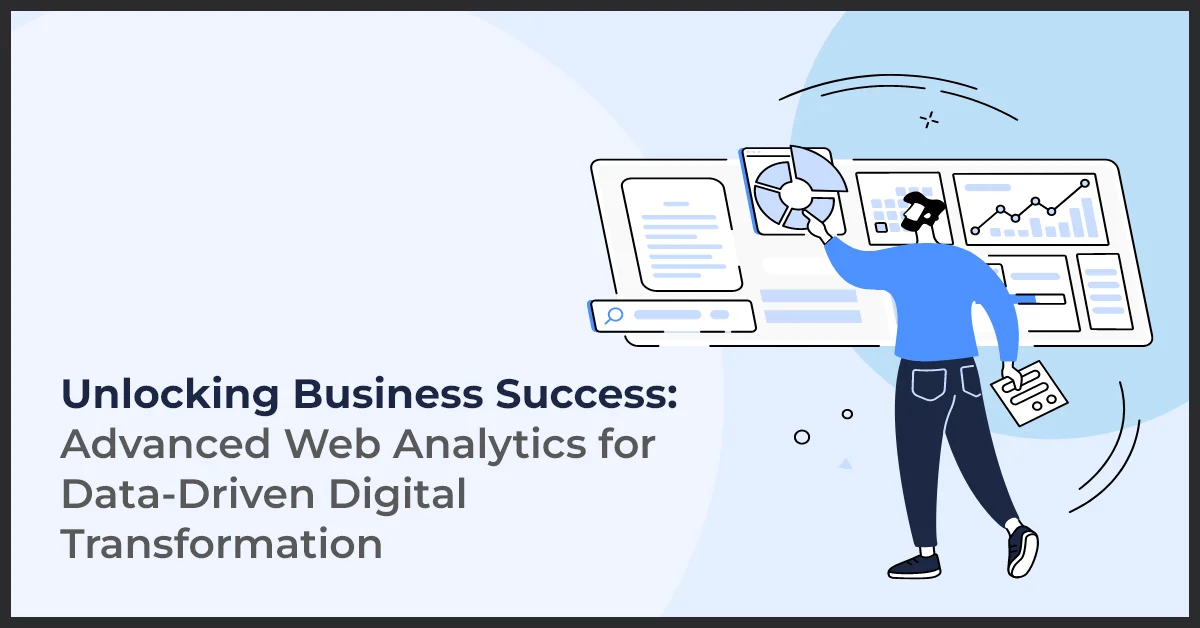Tips to Improve Bounce Rate in Web Analytics

Published on: April 20, 2023
Updated on: June 26, 2024
1927 Views
- Web Analytics
6 min read
“Your website has a high bounce rate” – A nightmare for marketers.
A high bounce rate is something that keeps marketers up all night. Moreover, this is one of the major points of discussion on Twitter, Facebook, and other digital marketing groups.
And this is the reason you are reading this article. No matter what brought you here today, there is one thing you need to understand – you cannot decide on a perfect bounce rate. Heck, a “perfect bounce rate” does not exist.
So, when we talk about bounce rate, all you need to know is should not be too high that your website is moved back to the search engine result page (where no one ever visits).
In this article, we are going to understand the reason behind the high bounce rate and how you can improve it. But before we move further, let’s talk about bounce rate and how it is different from exit rate.
What Is Bounce Rate?
Bounce rate means the percentage of visitors leaving the website or going back to the search engine or the referring website without taking any action or only by viewing one page of the website. The volume of single-page visits to your website is divided by the total number of page sessions to get your bounce rate.
What exactly is a high bounce rate, and what makes it bad? So, your bounce rate is equal to 60% if 100 people arrive at your website and 60 of them leave without reading any further pages.
Exit Rate Vs Bounce Rate
Exit rate is the proportion of users who, after seeing any number of pages on a website, depart from a certain page. On the other hand, the percentage of visitors that land on a page and immediately leave it is known as the bounce rate.
Exit Rate
If a visitor visits your blog, and then they click on the internal link present on that blog, they are redirected to the next page. So, after viewing the second article they close the website or browser then this doesn’t conclude as a bounce. But as the visitor left the site and visited the second article, it will conclude as the exit rate of the web page.
Bounce Rate
Assume a visitor arrives at one of your blogs. Then, a few seconds later, they close their website or browser. That is certainly a bounce. The bounce rate for that page will increase.
Understanding the Good Bounce Rate
When it comes to determining a “good” bounce rate, several variables come into existence such as type of industry, business, devices used by visitors, and many more.
Web analytics or Google analytics can be a great way to determine the target bounce rate for your website. It helps you gain a quick view of the average bounce rate for your niche and industry by using a benchmarking technique. In order to get a quick view, you need to set the benchmarking on Google Analytics.
The average bounce rate can be between 26% and 70%. However, it can vary from industry to industry. Here is a list of a few types of websites and their average bounce rate.
- Ecommerce Websites – from 20% to 45%
- Non-Ecommerce Websites – from 35% to 60%
- B2B Websites – from 25% to 55%
- Lead Generation Websites – from 30% to 55%
Why Bounce Rate Matters in Web Analytics?
Bounce rate matters in web analytics as it helps to understand why your visitors are leaving your website without taking any action. The content of the page may be irrelevant or perplexing to your site visitors, which can be indicated by high bounce rates.
It would be concerning to have a high bounce rate on your webpage, as it indicates that visitors are only viewing it once before leaving. They didn't fill out a form or reply to a Call To Action, which indicates that you are losing out on conversion.
Tips to Improve Bounce Tips to Improve Bounce Rate
Optimize Page Loading Time
Page load speed is one of the most important factors impacting your bounce rate. So the slower your web page loads, the higher will be your bounce rate. A website that takes longer than three seconds to load loses 40% of its visitors.
For mobile devices, page load speed is even more important since consumers are more likely to abandon a website when it takes too long to load. Also, page speed affects how well you rank in search engines.
Google has recently begun including page speed in its ranking algorithms. Improved user experience and higher ranks in the SERPs are two common implications of quicker page speeds, which boost SEO.
Offer Seamless Navigation
If you want your visitors to stay longer on your website, you need to make the navigation easy and effortless.
Your visitors need a clear direction when they visit your website. Hence, you need to design an interactive navigation menu that lets them know where the desired set of information is or where the product is that they have been looking for.
If your navigation menu is not intuitive and simplistic, then your visitors will probably bounce from the site.
Create a Better User Experience
To provide your visitors with a good and satisfactory user experience, you need to design a fast, intuitive, and well-structured website. It includes everything from visual experience to content and navigation to interaction that helps in meeting and exceeding customers’ expectations.
Customer behavior and buyer persona can help you design a better user experience that will decrease your bounce rate. Understand what they want from your website. What they are looking for? What content drives them?
Once you figure out what makes your customers stay, you can rework your website and content accordingly in order to make it more engaging.
Easy to Read Webpages
One thing that can make your customers pull away in seconds is non-informative content. Your website should provide relevant and clear information about your products and services.
You can start by creating content in smaller blocks, bullet points, and multiple headings. You can also include images, infographics, and video content to make visitors stay longer.
No one wants to see disorganized text, with no proper headings and huge paragraphs. And if this is the case, visitors will likely skip your web page. Thus, creating easy-to-read content can help in reducing bounce rates and create a better user experience as well.
Create Appealing Landing Pages
No matter how perfectly designed your home page is if the most traffic generated is from blog or service pages that are not optimized properly. Thus, landing pages can work like a charm for your website.
Landing pages are the entry point for your visitors. They are designed to attract visitors using compelling CTAs and attractive layouts.
Moreover, if you use paid ads, landing pages are imperative.
Conclusion
A high bounce rate is sometimes an obvious indicator that your website doesn't live up to visitors' expectations.
In order to determine why you have a high bounce rate, you can start by reviewing your web analytics strategy.
If you are still confused, you can reach out to our experts at info@growthnatives.com.
Source : neilpatel.com/blog/loading-time/
Frequently Asked Questions
To improve your bounce rate, focus on enhancing website content, improving page load speed, optimizing website design for better user experience, providing relevant and engaging content, and implementing clear calls-to-action.
In web analytics, bounce rate refers to the percentage of visitors who leave a website after viewing only one page without interacting further or navigating to other pages within the site.
You can optimize your website bounce rate by:
- Creating compelling and relevant content
- Improving page load speed
- Enhancing website navigation and usability
- Using clear and prominent calls to action
- Ensuring mobile responsiveness
- Optimizing for search intent and user experience
SEO can affect bounce rate indirectly by influencing the quality of traffic your website receives. High-quality, relevant traffic from search engines is more likely to engage with your content and explore multiple pages, resulting in a lower bounce rate. Additionally, optimizing for relevant keywords and providing valuable content aligned with search intent can attract users who are more likely to stay on your site, thereby reducing the bounce rate.



